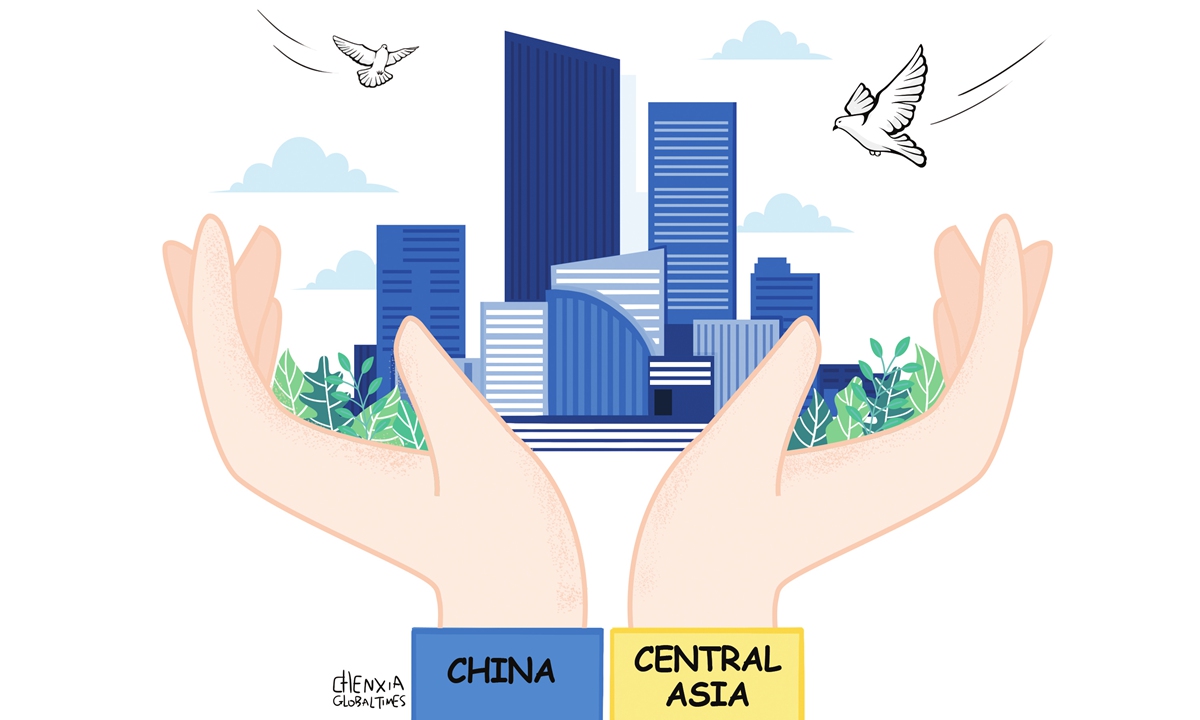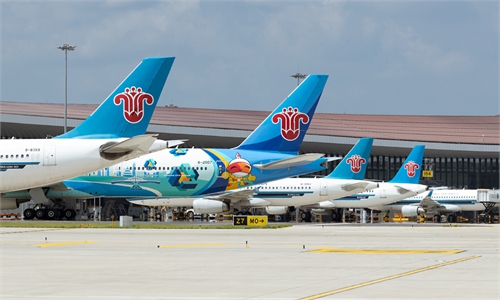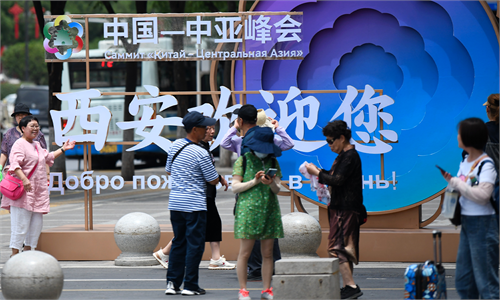
Illustration: Chen Xia/GT
The China-Central Asia Summit in the Chinese city of Xi'an, Shaanxi Province, is a new platform in the international arena and will open a new chapter in the history of cooperation between the six countries. All the countries of the region are involved in the China-proposed Belt and Road Initiative, and are implementing bilateral projects with China in the interests of all participants. The summit in Xi'an will bring the processes of economic, humanitarian, technological, and infrastructural cooperation between China and Central Asia to a new global level.The diplomacy of modern China is global in scope and is a complex combination of a wide variety of traditional and new methods and mechanisms. Its main goal is to contribute to what Chinese President Xi Jinping called "the great rejuvenation of the nation," and its main tasks are to create the most favorable international environment for its development and provide resources for its economy. The global scale of diplomacy is indicated by the consideration by the Chinese side of the development of the country only in the context of interaction with the international community as a whole: The future and destiny of China are becoming more closely connected with the international community. China cannot develop in isolation from the rest of the world, and the world cannot become stable and develop without China.
The huge Chinese market is becoming the most attractive for manufacturers of various goods from Central Asia. Deliveries of environmentally friendly agricultural products from Central Asia are gradually increasing. Uzbekistan is one of the few countries in the world that has permission to export cherries to China. And Kyrgyzstan and Tajikistan are gradually increasing the supply of food products, including meat, honey and dried fruits. Kazakhstan is China's largest neighbor in Central Asia through which China exports a lot of goods.
China is consistent in its foreign policy, within the framework of which it proclaims understandable concepts such as Five Principles of Peaceful Coexistence and the pursuit of peaceful development. In an era of geopolitical turbulence and economic crises, it is important for the leaders of Central Asia to have China as a partner as the world's second-largest economy, an independent technological and financial center that upholds the principle of not violating other states' sovereignty, and the development of a peaceful way of coexistence in the system of international relations.
For the countries of Central Asia, it is very important that China puts forward the idea of global partnership at the world and regional levels based on the understanding that "joint development is real development, sustainable development is high-quality development." And China focuses on the fact that the results should be aimed at obtaining win-win. This is an understandable and acceptable paradigm of relations for the entire region. A priority of China's foreign policy is its relations with developing countries. China aims to strengthen all-round diplomacy and move from bilateral to multilateral relations, advocating all-round development and partnerships around the world. In this regard, the China-Central Asia Summit can be regarded as a logical step toward creating a belt of stability in Central Eurasia.
Given the war in Ukraine, the countries of Central Asia found themselves within the framework of a new reality. The number of Russian businesses in Kazakhstan has been increasing by 500-800 entities every month since March 2022. This is due to the impact of sanctions. We see huge Chinese investments coming not only to Kazakhstan, but also to Uzbekistan, Kyrgyzstan and Tajikistan. Now Central Asia is becoming a kind of neutral zone, in which China, Turkey and other countries, including India, will create their own production facilities for trade throughout the EAEU.
The new Silk Road de facto started working, just like hundreds of years ago. It operates as a transportation of hydrocarbons from the Central Asian countries to Europe, the supply of technologies and equipment to Central Asia from China and Turkey, and industrial goods from China to Europe.
At present, new opportunities are emerging for all countries of Central Asia, a qualitative restructuring of the economy is taking place. We have great prospects for development. But these are only prospects, without painstaking and well-coordinated work, the process will not start at the desired speed.
The author is head of the "Elchi" Institute of Social-Political Research in Kyrgyzstan. opinion@globaltimes.com.cn



